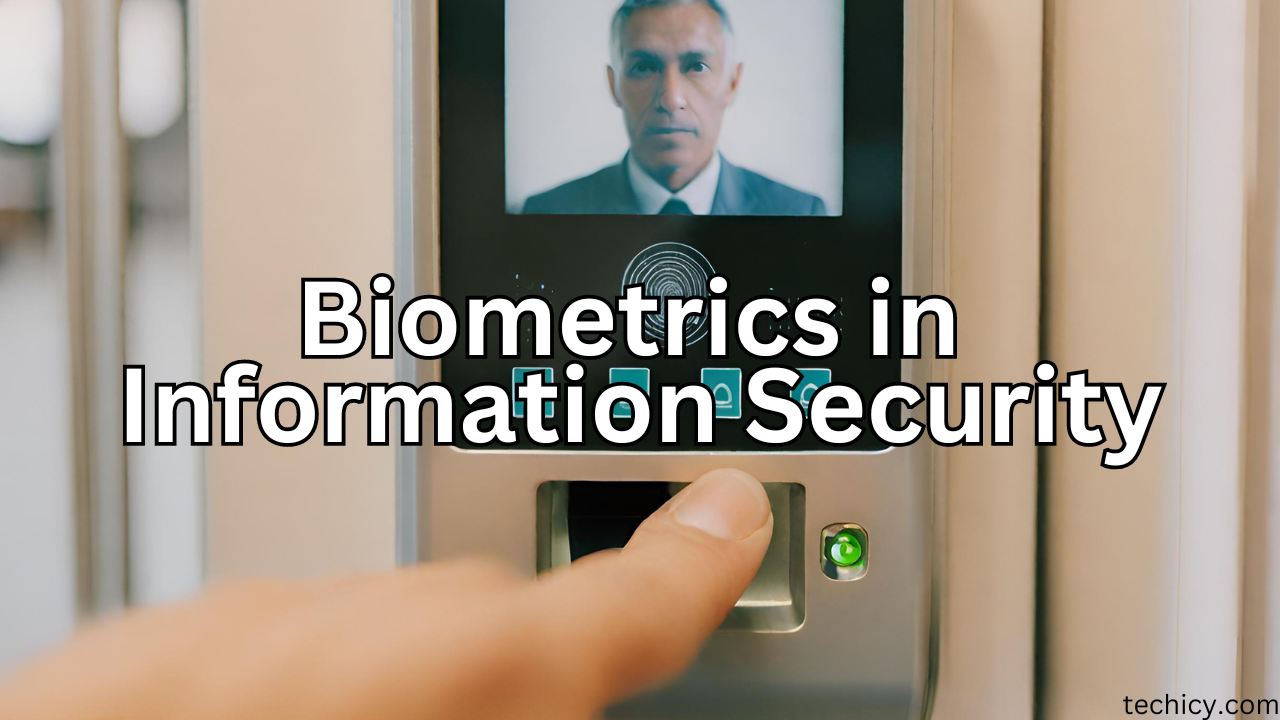In an increasingly digital world, the need for robust information security has never been greater. As we rely on technology for everything from financial transactions to social interactions, protecting our sensitive data is paramount. One technology that has gained significant prominence in the realm of information security is biometrics. Biometrics, the measurement and statistical analysis of people’s unique physical and behavioral characteristics, offers a promising solution for authentication and access control. However, the adoption of biometrics comes with a crucial challenge: finding the delicate equilibrium between convenience and privacy.
In this article, we explore the evolution of biometrics in information security, its applications, advantages, potential risks, and the ethical considerations surrounding its use.
The Evolution of Biometrics in Information Security
The use of biometrics for security purposes is not a new concept. Historically, human societies have employed various biometric identifiers, such as fingerprints, for identification and verification. The contemporary landscape of biometrics, however, has evolved significantly with advancements in technology.
Early Biometrics in Ancient Times
Early civilizations utilized biometrics in rudimentary ways. For example, the ancient Babylonians recorded fingerprints on clay tablets for business transactions, marking one of the earliest known uses of biometrics. Additionally, the Chinese used handprints as signatures on legal documents, recognizing the uniqueness of these physical attributes.
Biometrics in the Modern Age
The modern era of biometrics began in the late 19th century when Sir Francis Galton, a cousin of Charles Darwin, conducted groundbreaking research on fingerprints. This research laid the foundation for the scientific study of biometrics. Over time, other biometric identifiers such as retina scans, iris scans, and facial recognition have gained prominence.
The Digital Revolution and Biometrics
The digital age has seen biometrics integrated into a wide array of applications, particularly in information security. This integration has been made possible by advances in computing power, data storage, and algorithms. Biometric authentication methods are now commonly used for unlocking smartphones, accessing secure facilities, and even authorizing financial transactions.
Applications of Biometrics in Information Security
Biometrics has found applications in various domains of information security, contributing to both convenience and enhanced security.
Access Control
Biometric authentication is widely used for access control in both physical and digital environments. Fingerprint scanners, facial recognition systems, and iris scanners are common methods used to restrict access to authorized personnel only.
Mobile Devices
Smartphones have integrated biometric authentication methods such as fingerprint recognition and facial recognition to secure user data. This not only enhances security but also provides users with a convenient and fast way to unlock their devices.
Financial Transactions
Biometrics are increasingly used in the financial sector to enhance the security of transactions. Voice recognition, fingerprint scanning, and facial recognition are used for identity verification during online banking and mobile payment processes.
Border Control
Many countries employ biometric technologies at border control points to verify the identity of travelers. This helps in preventing fraud and enhancing security.
Healthcare
In healthcare, biometrics can be used to secure patient records and control access to sensitive medical information. It can also be used for patient identification, ensuring that the right treatments are administered to the right individuals.
Advantages of Biometrics in Information Security
Biometrics offers several advantages when it comes to information security:
1. Uniqueness
Biometric identifiers are highly unique to individuals, making it challenging for unauthorized users to impersonate someone else. This uniqueness enhances security significantly.
2. Convenience
Biometric authentication is often more convenient than traditional methods such as passwords or PINs. Users do not need to remember complex strings of characters, and the authentication process is typically fast and seamless.
3. Non-repudiation
Biometric data, such as a fingerprint or retina scan, is difficult to forge or replicate. This provides a high level of non-repudiation, meaning that a user cannot deny their actions or transactions.
4. Improved Security
Biometric authentication can provide a higher level of security compared to traditional authentication methods. It reduces the risk of password theft or unauthorized access due to stolen credentials.
Potential Risks and Concerns
While biometrics offer significant advantages, there are also potential risks and concerns that must be addressed:
1. Privacy Concerns
The collection and storage of biometric data raise significant privacy concerns. Storing such data in centralized databases could make it vulnerable to breaches, potentially exposing individuals to identity theft and other malicious activities.
2. False Positives and False Negatives
Biometric systems are not infallible. They can produce false positives (authenticating the wrong person) and false negatives (rejecting the rightful user). These errors can have serious consequences, especially in high-security environments.
3. Biometric Data Theft
If biometric data is compromised, it cannot be changed like a password. Once stolen, it remains compromised for life, potentially leading to long-term security risks.
4. Ethical and Legal Concerns
The use of biometrics raises ethical and legal questions related to consent, data ownership, and potential discrimination. For instance, there have been concerns about facial recognition technology disproportionately misidentifying individuals from certain racial or ethnic groups.
Balancing Convenience and Privacy
Achieving the delicate balance between convenience and privacy in the context of biometrics is a complex task. Here are some key considerations:
1. Data Encryption and Security
To protect biometric data, it should be stored and transmitted using robust encryption methods. Additionally, organizations should implement stringent security measures to safeguard against data breaches.
2. Consent and Transparency
Individuals should be fully informed about how their biometric data will be used and have the option to provide or withdraw consent. Transparency in data usage is crucial for maintaining trust.
3. Data Minimization
Organizations should collect only the minimum amount of biometric data necessary for the intended purpose. This helps reduce the risk associated with the storage of sensitive information.
4. Regular Audits and Compliance
Regular audits of biometric systems should be conducted to identify and rectify vulnerabilities. Organizations should also comply with relevant data protection laws and regulations.
5. Biometric Alternatives
In some cases, biometric alternatives or multi-factor authentication methods may be used to reduce the reliance on biometric data alone. This can provide an additional layer of security while preserving user privacy.
Conclusion
Biometrics has revolutionized the field of information security and cybersecurity, offering a powerful tool for authentication and access control. Its ability to provide convenience and enhanced security makes it an attractive option in an increasingly digital world. However, the adoption of biometrics must be carefully managed to address potential risks and privacy concerns. Striking the right balance between convenience and privacy is essential to harness the full potential of biometrics while protecting individual rights and data. As technology continues to advance, it is imperative that we continue to evaluate and refine our approach to biometric security to ensure that it serves both our security needs and our ethical responsibilities.
About Author
My name is Manpreet and I am the Content Manager at Scrut Automation, one of the leading risk observability and compliance automation SaaS platforms. I make a living creating content regarding cybersecurity and information security.
Manpreet can be reached online at manpreet@scrut.io and at our company website https://www.scrut.io/

